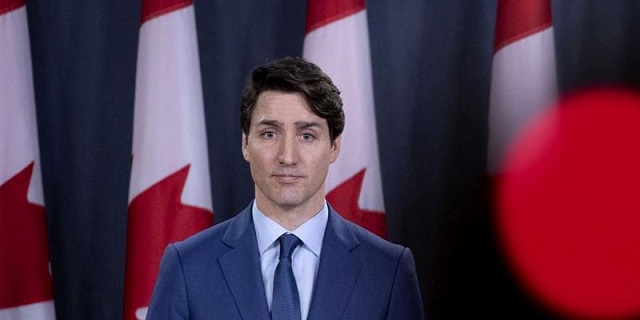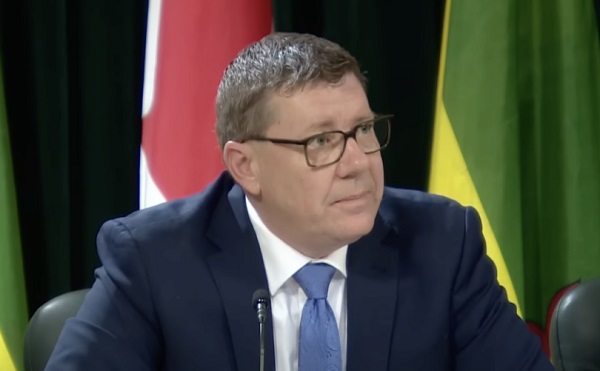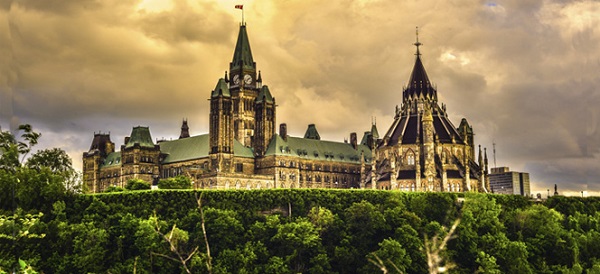Business
Federal government’s ‘fudget budget’ relies on fanciful assumptions of productivity growth

From the Fraser Institute
By Niels Veldhuis and Jake Fuss
Labour productivity isn’t growing, it’s declining. And stretching the analysis over the Trudeau government’s time in office (2015 to 2023, omitting 2020 due to COVID), labour productivity has declined by an average of 0.8 per cent. How can the Trudeau government, then, base the entirety of its budget plan on strong labour productivity growth?
As the federal budget swells to a staggering half a trillion dollars in annual spending—yes, you read that correctly, a whopping $538 billion this year or roughly $13,233 per Canadian—and stretches over 430 pages, it’s become a formidable task for the media to dissect and evaluate. While it’s easy to spot individual initiatives (e.g. the economically damaging capital gains tax increase) and offer commentary, the sheer scale and complexity of the budget make it hard to properly evaluate. Not surprisingly, most post-budget analysts missed a critically important assumption that underlies every number in the budget—the Liberals’ assumption of productivity growth.
Indeed, Canada is suffering a productivity growth crisis. “Canada has seen no productivity growth in recent years,” said Carolyn Rogers, senior deputy governor at the Bank of Canada, in a recent speech. “You’ve seen those signs that say, ‘In emergency, break glass.’ Well, it’s time to break the glass.”
The media widely covered this stark warning, which should have served as a wake-up call, urging the Trudeau government to take immediate action. At the very least, this budget’s ability—or more accurately, inability—to increase productivity growth should have been a core focus of every budget analysis.
Of course, the word “productivity” puts most people, except die-hard economists, to sleep. Or worse, prompts the “You just want us to work harder?” questions. As Rogers noted though, “Increasing productivity means finding ways for people to create more value during the time they’re at work. This is a goal to aim for, not something to fear. When a company increases productivity, that means more revenue, which allows the company to pay higher wages to its workers.”
Clearly, labour productivity growth remains critical to our standard of living and, for governments, ultimately determines the economic growth levels on which they base their revenue assumptions. With $538 billion in spending planned for this year, the Trudeau government better hope it gets its forecasts right. Otherwise, the $39.8 billion deficit they expect this year could be significantly higher.
And here’s the rub. Buried deep in its 430-page budget is the Trudeau government’s assumption about labour productivity growth (page 385, to be exact). You see, the Liberals assume the economy will grow at an average of 1.8 per cent over the next five years (2024-2028) and predict that half that growth will come from the increase in the supply of labour (i.e. population growth) and half will come from labour productivity growth.
However, as the Bank of Canada has noted, labour productivity growth has been non-existent in Canada. The Bank uses data from Statistics Canada to highlight the country’s productivity, and as StatsCan puts it, “On average, over 2023, labour productivity of Canadian businesses fell 1.8 per cent, a third consecutive annual decline.”
In other words, labour productivity isn’t growing, it’s declining. And stretching the analysis over the Trudeau government’s time in office (2015 to 2023, omitting 2020 due to COVID), labour productivity has declined by an average of 0.8 per cent. How can the Trudeau government, then, base the entirety of its budget plan on strong labour productivity growth? It’s what we call a “fudget budget”—make up the numbers to make it work.
The Trudeau fudget budget notwithstanding, how can we increase productivity growth in Canada?
According to the Bank of Canada, “When you compare Canada’s recent productivity record with that of other countries, what really sticks out is how much we lag on investment in machinery, equipment and, importantly, intellectual property.”
Put simply, to increase productivity we need businesses to increase investment. From 2014 to 2022, Canada’s inflation-adjusted business investment per worker (excluding residential construction) declined 18.5 per cent from $20,264 to $16,515. This is a concerning trend considering the vital role investment plays in improving economic output and living standards for Canadians.
But the budget actually hurts—not helps—Canada’s investment climate. By increasing taxes on capital gains, the government will deter investment in the country and encourage a greater outflow of capital. Moreover, the budget forecasts deficits for at least five years, which increases the likelihood of future tax hikes and creates more uncertainty for entrepreneurs, investors and businesses. Such an unpredictable business environment will make it harder to attract investment to Canada.
This year’s federal budget rests on fanciful assumptions about productivity growth while actively deterring the very investment Canada needs to increase living standards for Canadians. That’s a far cry from what any reasonable person would call a successful strategy.
Authors:
Business
Saskatchewan becomes first Canadian province to fully eliminate carbon tax

From LifeSiteNews
Saskatchewan has become the first Canadian province to free itself entirely of the carbon tax.
On March 27, Saskatchewan Premier Scott Moe announced the removal of the provincial industrial carbon tax beginning April 1, boosting the province’s industry and making Saskatchewan the first carbon tax free province.
Under Moe’s direction, Saskatchewan has dropped the industrial carbon tax which he says will allow Saskatchewan to thrive under a “tariff environment.”
“I would hope that all of the parties running in the federal election would agree with those objectives and allow the provinces to regulate in this area without imposing the federal backstop,” he continued.
The removal of the tax is estimated to save Saskatchewan residents up to 18 cents a liter in gas prices.
The removal of the tax will take place on April 1, the same day the consumer carbon tax will reduce to 0 percent under Prime Minister Mark Carney’s direction. Notably, Carney did not scrap the carbon tax legislation: he just reduced its current rate to zero. This means it could come back at any time.
Furthermore, while Carney has dropped the consumer carbon tax, he has previously revealed that he wishes to implement a corporation carbon tax, the effects of which many argued would trickle down to all Canadians.
The Saskatchewan Association of Rural Municipalities (SARM) celebrated Moe’s move, noting that the carbon tax was especially difficult on farmers.
“I think the carbon tax has been in place for approximately six years now coming up in April and the cost keeps going up every year,” SARM president Bill Huber said.
“It puts our farming community and our business people in rural municipalities at a competitive disadvantage, having to pay this and compete on the world stage,” he continued.
“We’ve got a carbon tax on power — and that’s going to be gone now — and propane and natural gas and we use them more and more every year, with grain drying and different things in our farming operations,” he explained.
“I know most producers that have grain drying systems have three-phase power. If they haven’t got natural gas, they have propane to fire those dryers. And that cost goes on and on at a high level, and it’s made us more noncompetitive on a world stage,” Huber decalred.
The carbon tax is wildly unpopular and blamed for the rising cost of living throughout Canada. Currently, Canadians living in provinces under the federal carbon pricing scheme pay $80 per tonne.
Automotive
Electric cars just another poor climate policy

From the Fraser Institute
The electric car is widely seen as a symbol of a simple, clean solution to climate change. In reality, it’s inefficient, reliant on massive subsidies, and leaves behind a trail of pollution and death that is seldom acknowledged.
We are constantly reminded by climate activists and politicians that electric cars are cleaner, cheaper, and better. Canada and many other countries have promised to prohibit the sale of new gas and diesel cars within a decade. But if electric cars are really so good, why would we need to ban the alternatives?
And why has Canada needed to subsidize each electric car with a minimum $5,000 from the federal government and more from provincial governments to get them bought? Many people are not sold on the idea of an electric car because they worry about having to plan out where and when to recharge. They don’t want to wait for an uncomfortable amount of time while recharging; they don’t want to pay significantly more for the electric car and then see its used-car value decline much faster. For people not privileged to own their own house, recharging is a real challenge. Surveys show that only 15 per cent of Canadians and 11 per cent of Americans want to buy an electric car.
The main environmental selling point of an electric car is that it doesn’t pollute. It is true that its engine doesn’t produce any CO₂ while driving, but it still emits carbon in other ways. Manufacturing the car generates emissions—especially producing the battery which requires a large amount of energy, mostly achieved with coal in China. So even when an electric car is being recharged with clean power in BC, over its lifetime it will emit about one-third of an equivalent gasoline car. When recharged in Alberta, it will emit almost three-quarters.
In some parts of the world, like India, so much of the power comes from coal that electric cars end up emitting more CO₂ than gasoline cars. Across the world, on average, the International Energy Agency estimates that an electric car using the global average mix of power sources over its lifetime will emit nearly half as much CO₂ as a gasoline-driven car, saving about 22 tonnes of CO₂.
But using an electric car to cut emissions is incredibly ineffective. On America’s longest-established carbon trading system, you could buy 22 tonnes of carbon emission cuts for about $660 (US$460). Yet, Ottawa is subsidizing every electric car to the tune of $5,000 or nearly ten times as much, which increases even more if provincial subsidies are included. And since about half of those electrical vehicles would have been bought anyway, it is likely that Canada has spent nearly twenty-times too much cutting CO₂ with electric cars than it could have. To put it differently, Canada could have cut twenty-times more CO₂ for the same amount of money.
Moreover, all these estimates assume that electric cars are driven as far as gasoline cars. They are not. In the US, nine-in-ten households with an electric car actually have one, two or more non-electric cars, with most including an SUV, truck or minivan. Moreover, the electric car is usually driven less than half as much as the other vehicles, which means the CO₂ emission reduction is much smaller. Subsidized electric cars are typically a ‘second’ car for rich people to show off their environmental credentials.
Electric cars are also 320–440 kilograms heavier than equivalent gasoline cars because of their enormous batteries. This means they will wear down roads faster, and cost societies more. They will also cause more air pollution by shredding more particulates from tire and road wear along with their brakes. Now, gasoline cars also pollute through combustion, but electric cars in total pollute more, both from tire and road wear and from forcing more power stations online, often the most polluting ones. The latest meta-study shows that overall electric cars are worse on particulate air pollution. Another study found that in two-thirds of US states, electric cars cause more of the most dangerous particulate air pollution than gasoline-powered cars.
These heavy electric cars are also more dangerous when involved in accidents, because heavy cars more often kill the other party. A study in Nature shows that in total, heavier electric cars will cause so many more deaths that the toll could outweigh the total climate benefits from reduced CO₂ emissions.
Many pundits suggest electric car sales will dominate gasoline cars within a few decades, but the reality is starkly different. A 2023-estimate from the Biden Administration shows that even in 2050, more than two-thirds of all cars globally will still be powered by gas or diesel.
Source: US Energy Information Administration, reference scenario, October 2023
Fossil fuel cars, vast majority is gasoline, also some diesel, all light duty vehicles, the remaining % is mostly LPG.
Electric vehicles will only take over when innovation has made them better and cheaper for real. For now, electric cars run not mostly on electricity but on bad policy and subsidies, costing hundreds of billions of dollars, blocking consumers from choosing the cars they want, and achieving virtually nothing for climate change.
-

 2025 Federal Election1 day ago
2025 Federal Election1 day agoJoe Tay Says He Contacted RCMP for Protection, Demands Carney Fire MP Over “Bounty” Remark
-

 2025 Federal Election1 day ago
2025 Federal Election1 day agoHong Kong-Canadian Groups Demand PM Carney Drop Liberal Candidate Over “Bounty” Remark Supporting CCP Repression
-

 2025 Federal Election1 day ago
2025 Federal Election1 day agoAlcohol tax and MP pay hike tomorrow (April 1)
-

 2025 Federal Election2 days ago
2025 Federal Election2 days agoChinese Election Interference – NDP reaction to bounty on Conservative candidate
-

 2025 Federal Election1 day ago
2025 Federal Election1 day agoPoilievre To Create ‘Canada First’ National Energy Corridor
-

 2025 Federal Election1 day ago
2025 Federal Election1 day agoChina Election Interference – Parties Received Security Briefing Days Ago as SITE Monitors Threats to Conservative Candidate Joe Tay
-

 2025 Federal Election1 day ago
2025 Federal Election1 day agoFixing Canada’s immigration system should be next government’s top priority
-

 Bruce Dowbiggin1 day ago
Bruce Dowbiggin1 day agoAre the Jays Signing Or Declining? Only Vladdy & Bo Know For Sure









